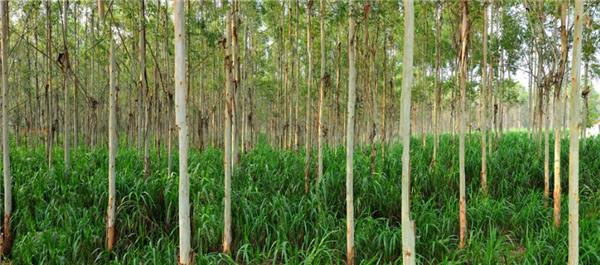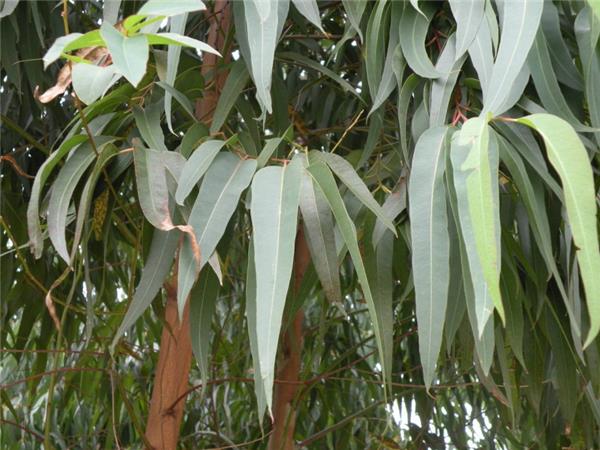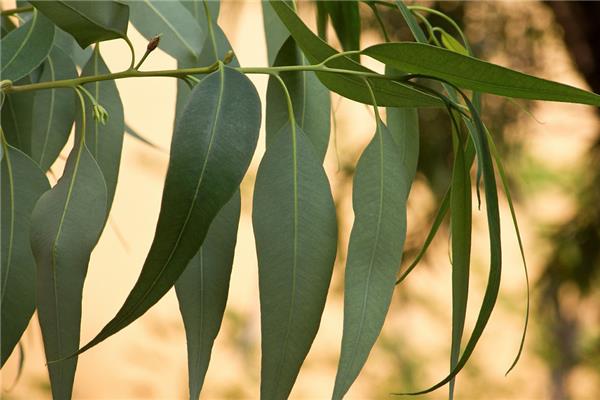Detailed explanation of cultivation, maintenance and function of Eucalyptus dunnei
Eucalyptus Dunn looks like a tall, thin, handsome man, and it has a lot of functions. Let's take a look at it.

Introduction of Eucalyptus dunnei
Morphological characteristics: the morphological characteristics are similar to those of Eucalyptus grandis and Eucalyptus grandis. The tree body of Eucalyptus dunenii is medium to large, and under open growth conditions, the branches are large and dense. The immature plants can be as high as 50 meters, the trunk is straight, and the high energy under the branches can reach 30-35 meters. When cultivated as a plantation, the straightness of the trunk is better than that of Eucalyptus grandis, and the branches are finer. The heartwood of wood is light brownish red, and there is no obvious difference between the color of sapwood and heartwood.
Distribution habits: Eucalyptus Dunn has strong cold tolerance, the lowest temperature that seedlings and young trees are sure to endure is minus 5 degrees, and the cold tolerance will become stronger with the increase of tree age. Seedlings are safe from extreme temperatures above minus 5 degrees Celsius, but sensitive to temperatures beyond this range; if the low temperature lasts for a short time, the tolerable temperature can be lower; the extremely low temperature that the adult forest can endure is lower and lasts longer.
Function: the tree of Eucalyptus Dunn is moderately large, and the branches are large and dense under open growth conditions. Its mature plants can be up to 50 meters high, the trunk is straight, and the high energy under the branches can reach 30 meters, 35 meters. When cultivated as a plantation, its trunk straightness is better than that of Eucalyptus grandis, and its branches are finer. The heartwood of its wood is light brownish red, and there is no obvious difference between the color of sapwood and heartwood. Its wood is medium and uniform in thickness and straight in texture. The density of air-dried wood of mature wood is about 800kg/m3. Some of the wood from Eucalyptus Dunn is used as sawn wood.

Cultivation and maintenance of Eucalyptus dunnei
Mode of reproduction: seed sowing, cottage cutting, tissue culture. Cultivation management is basically the same as eucalyptus. Unfortunately, its asexual reproduction is also very difficult, whether in tissue culture or cutting, the rooting rate is very low.
Planting environment: the growth of Eucalyptus dunnii is relatively strict, and its growth may vary greatly with different site quality. it is generally believed that the high hills and low mountains with fertile soil and moist air can give full play to their growth potential.
Temperature management: the cold tolerance of Eucalyptus Dunn should be determined by at least three factors: tree age, extremely low temperature and low temperature duration. The cold tolerance of the 2-year-old forest is obviously weaker than that of the mature forest, but the low temperature of less than 5 days and the extreme temperature above minus 5 degrees Celsius is safe for it, and it is very sensitive to the temperature beyond this range; if the duration of the low temperature is short, the temperature it can endure can be lower; the extremely low temperature that the adult forest can endure is lower and longer.

A detailed explanation of the function of Eucalyptus Dunn
Wood use: the density of Eucalyptus dunnii as pulp wood is very ideal, because it not only ensures good pulp properties, but also has Rogao absolute value, so that the wood consumption per ton of pulp is low. The wood density of Eucalyptus grandis is higher than that of Eucalyptus grandis, and the wood property of Eucalyptus grandis is better than that of Eucalyptus grandis, and its wood density is higher in living eucalyptus.
Papermaking performance: in terms of fiber length, the fiber length of 4-year-old Eucalyptus dunenii is between 0.6mm, and the fiber of Eucalyptus dunenii is longer among all tree species, and the tensile strength and cracking degree of its pulp are also the largest; after being made into paper, the paper has better operation, processability and adaptability than other tree species. Therefore, from the point of view of pulping and papermaking, Dunne Eucalyptus is a rare excellent tree species in eucalyptus.
Other uses: Dunne eucalyptus has red wood and excellent quality. In some places in Australia, Dunne eucalyptus has been successfully used as sawing wood for solid wood processing. Their sawing and drying tests on Dunne eucalyptus plantation show that it is suitable to be used as solid wood processing wood.

The above is all about Dunne eucalyptus, how to raise, is this kind of tree very powerful? Dunne eucalyptus, which has so many functions and functions, has a very high culture value, oh, but because it is more difficult to raise, so we must be very careful in breeding.
- Prev

How to carry out weeding and nursing for plants correctly and scientifically
How to carry out weeding and nursing for plants correctly and scientifically
- Next

Characteristics of Ruby Begonia and Cultivation Methods of Ruby Begonia
Characteristics of Ruby Begonia and Cultivation Methods of Ruby Begonia
Related
- Wuhan Hospital Iron Tree Blooming Result Was Instantly Frightened by the Gardener Master
- Which variety of camellia is the most fragrant and best? Which one do you like best?
- What is the small blue coat, the breeding methods and matters needing attention of the succulent plant
- Dormancy time and maintenance management of succulent plants during dormancy
- Minas succulent how to raise, Minas succulent plant pictures
- What are the varieties of winter succulent plants
- How to raise succulent plants in twelve rolls? let's take a look at some experience of breeding twelve rolls.
- Attention should be paid to water control for succulent plants during dormant period (winter and summer)
- Watering experience of twelve rolls of succulent plants
- Techniques for fertilizing succulent plants. An article will let you know how to fertilize succulent plants.

